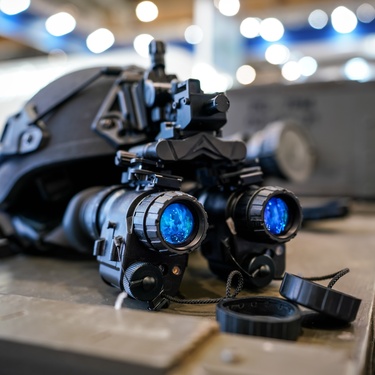The first question to pop in your mind at this very moment may be, “What in the world is a fiber laser cutter?” A fiber laser cutter is exactly what you'd imagine—a machine with a light beam that can mark material with designs and coordinates to help workers make accurate cuts. Now, for a follow-up question, why should you care? Well, when working in metal fabrication, you need the right equipment. Not only that, but you must be aware of how hot these laser cutters can get and what to expect with the process. Luckily, we’ve got the answer to your third question, “What can you mark with a fiber laser cutter?” Read on, and you’ll find your answer.
Aluminum
Aluminum is a common material used by many industries. Aluminum has a lower intensity to marking. When marked, the color turns white. Aluminum works well when anodized, but white marking isn't suitable for bare and cast aluminum. The reason it's not great for bare or cast aluminum is that the laser would need to have a heavier setting on these types. When complete, the colors shift from dark grey to charcoal.
Ablation is best for anodized aluminum, depending on your system requirements. Depending on the project you're working on, your task may require etching and engraving. For projects working with bare and cast aluminum, you'll need to put them through a process called annealing for them to turn white.
Brass
When cutting into brass, it's important to note the high thermal transfer and conductive properties. These properties are beneficial when using brass for wiring, circuit boards, and pressurized flow meters. The properties are perfect for laser marking systems because heat dissipates when the laser hits the brass. Reduction of heat decreases the impact the laser has on the integrity of the material.
If there's a smooth finish, the brass will give a polished effect, but like aluminum, they can also be annealed, etched, or engraved. Brass pieces with a granular surface hardly have any polishing effect.
Chrome
Chrome is highly valued and comes at a greater cost as a result. It's sophisticated and hardly necessitates any laser intensity to go through plating. However, it's essential to know that you can only apply markings to the surface. When using lower-powered but faster pulses, you can yield fantastic results.
Non-Semiconductor Ceramics
Ceramics come in many sizes and shapes. Some are soft, and others come hardened. However, ceramics are considered difficult to use a laser on, as they don't absorb much light or show wavelength. Use a green laser to help mark ceramics.
Every material is unique, so the answer to your question, what can you mark with a laser cutter, all starts in this guide on the materials you can cut through and the processes you need to take to mark the material. Using good material helps with the successful use of a fiber laser cutter.


























